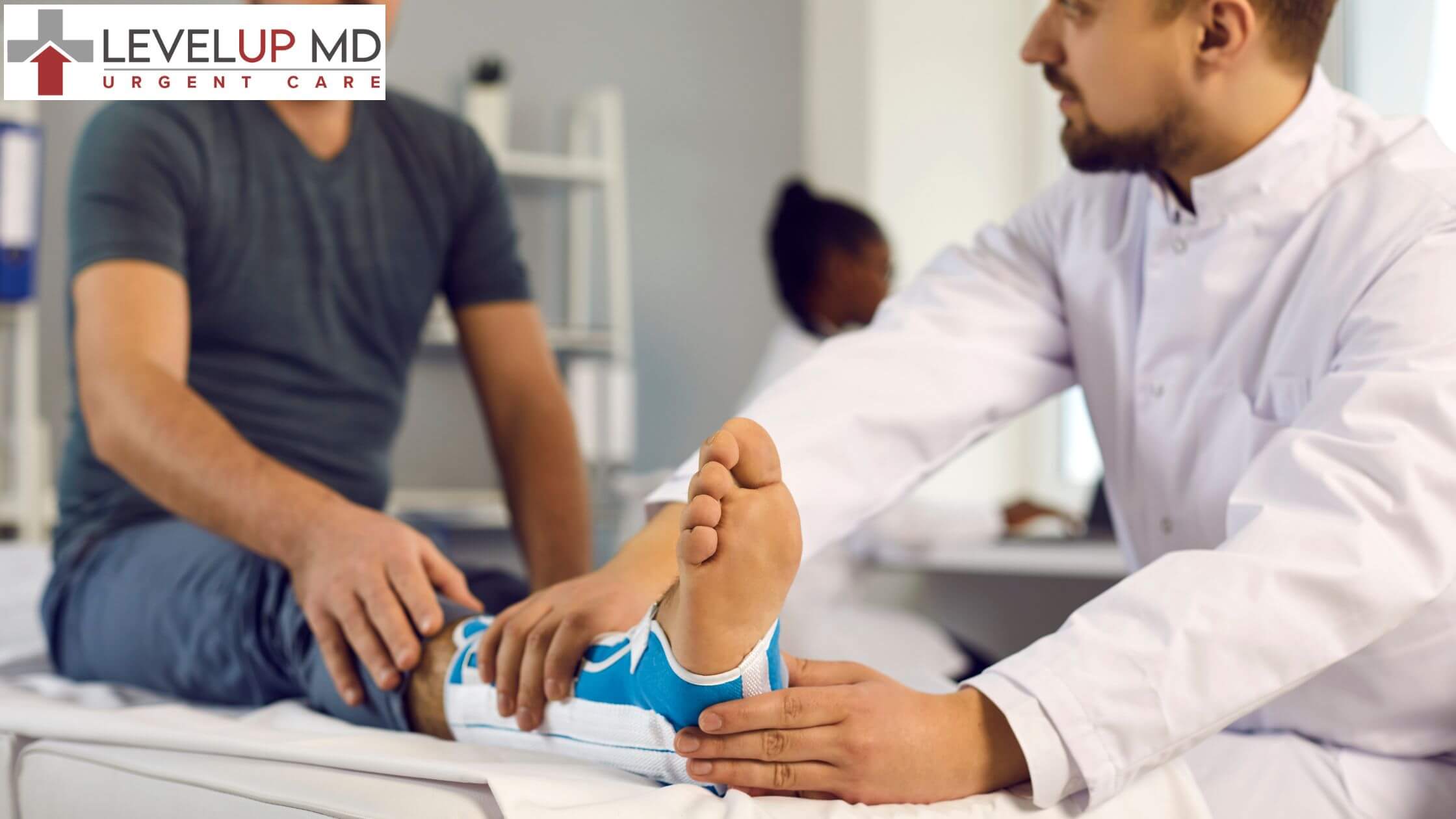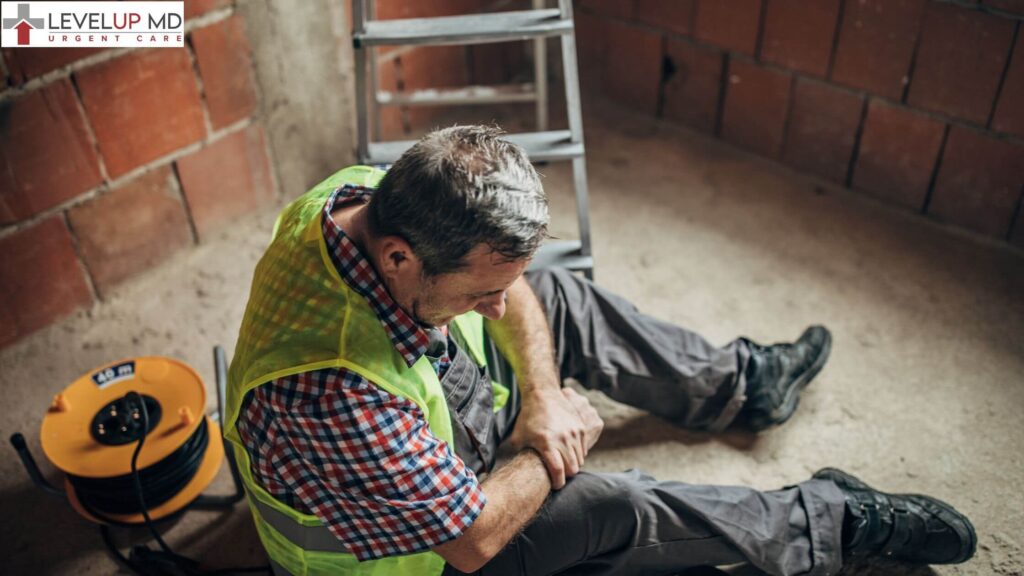
Urgent Care: Your Go-To Solution for Efficient and Budget-Friendly Healthcare
When you’re faced with a sudden illness or injury, figuring out the best Urgent Care center to get treated can feel overwhelming. Do you head straight to the emergency room, wait for a doctor’s appointment, or walk into an urgent care clinic?
For many non-life-threatening situations, urgent care services are the quickest, most affordable solution. This guide explains everything you need to know about urgent care—from what it is and how it works to when it’s the best option.
Understanding Urgent Care: What It Is and How It Works
Urgent care centers provide walk-in medical services for non-emergency illnesses and injuries. They offer fast, professional urgent care treatment without the hassle of long waits often found in emergency rooms. Think of urgent care as a middle ground between your primary care doctor and the emergency room, designed for situations that require attention but aren’t life-threatening.
Why is It Different from Emergency Rooms?
While emergency rooms treat severe conditions such as heart attacks, strokes, and trauma, these clinics are designed for immediate care of non-life-threatening issues. For example, their services are ideal for treating minor injuries like sprains, burns, and cuts that need stitches. It is also suitable for in-house testing, such as STD testing, Covid-19, and X-rays, as well as illnesses like strep throat or flu.
Key differences between the Urgent Care Center and Emergency Room include:
- Wait Times: Emergency rooms prioritize critical cases first, leading to long waits for minor issues like sprains, burns, cuts, etc. These centers handle patients on a first-come, first-served basis, so you’ll usually be seen much faster.
- Cost: Emergency room bills can easily exceed thousands of dollars, while urgent care is more affordable.
- Focus: Emergency rooms are equipped for life-threatening medical conditions, while urgent care centers focus on quick clinic services like diagnostic testing, minor wound treatment, and vaccinations.
Top Benefits of Choosing Urgent Care for Immediate Medical Needs
Why should you consider visiting an Immediate care center instead of the ER or waiting for your primary doctor? Here’s what sets apart:
- Shorter Wait Times: Most centers hours accommodate walk-in patients and can often be treated in less than 15 minutes.
- Affordable Care: The cost of visiting an immediate clinic is significantly lower than emergency room visits.
- Wide Range of Services: From X-rays and diagnostics to prescriptions and medication refills, clinics offer comprehensive services for patients of all ages, including children.
- Convenient Locations
There’s likely care near you that doesn’t require an appointment, making it easier to get treatment when you need it.
When Should You Visit the Urgent Center Instead of an ER?
Here are situations where choosing urgent care is the best option:
- Minor Injuries Treated: Sprains, minor burns, cuts that need stitches, small fractures, Diarrhea, Abdominal Pain, Insect bites, skin rashes, etc.
- Illnesses: Flu, fever, ear infections, strep throat, diabetes, allergy treatment, and urinary tract infections.
- Non-Emergency Testing: Blood tests, X-rays, and rapid diagnostics for flu and strep.
- Children’s Medical Needs: Many centers provide child urgent care services to treat kids’ minor medical issues like rashes, sore throats, and sprains.
However, if you experience chest pain, difficulty breathing, severe trauma, or severe injuries, head directly to the ER.
How Urgent Care Fits into the Modern Healthcare System of the USA?
In today’s healthcare system, these clinics are filling a critical gap. They provide access to fast and affordable medical attention without the need for lengthy appointments. This model works well for working professionals, families with busy schedules, and people who need immediate care without the high cost of emergency services.
“According to National Urgent Care, As of September 2024, there are a total of 14,245 urgent care centers in the United States, and the current growth rate for new centers is seven Percent.”
It is estimated that these Centers across the USA will continue to provide urgent care services for more than 200 million patients per year.
“2021 data reported by the Centers for Disease Control and Prevention’s (CDC) National Center for Health Statistics, 26.5 percent of adults visited an Urgent Care or retail health clinic.”
Common Reasons to Visit
Common reasons to visit urgent care include illnesses like colds, flu, strep throat, and sinus infections; minor injuries such as sprains, cuts, and burns; physicals for school or sports; vaccinations; and screenings for common health issues.

Minor Injuries Treated: From Sprains to Cuts
If you’ve twisted an ankle, got a minor burn while cooking, or cut yourself while doing a DIY project, an urgent care center can help. Some of the most common minor injuries treated include:
- Sprains and Strains
- Minor Fractures (confirmed via on-site X-rays)
- Burns (first and second-degree)
- Cuts and Lacerations (including stitches)
Illnesses That Can Be Quickly Diagnosed and Treated
Many common illnesses can be treated without needing an ER visit. These include:
- Flu and Cold Symptoms
- Strep Throat
- Sinus Infections
- Urinary Tract Infections (UTIs)
- Respiratory Infections
When to Visit Urgent Care for Flu, Colds, and Allergies
Seasonal illnesses, such as flu, colds, and allergies, can strike at the worst times. If your symptoms worsen or don’t improve after a few days, visit clinic for fast relief. Many centers offer Walk-In for flu tests and prescription medications.
Why Ideal for Handling Workplace Accidents?

Accidents on the job—like slips, cuts, or strains—can happen anytime. Many clinics specialize in treating workplace injuries and offer workers’ compensation support and DOT physicals for employees.
Avoiding Long Waits
Nobody likes waiting for hours at an ER only to be told they don’t need emergency care. For non-life-threatening conditions, walk-in urgent care offers a quicker, more affordable solution.
Comprehensive Services Offered
X-Rays and Diagnostics: On-Site Testing for Accurate Results
Many urgent care clinics have on-site X-ray machines and diagnostic labs so that you can get results and treatment faster than at a traditional doctor’s office.
Laboratory Services Available at Urgent Care Centers
From blood tests to strep throat swabs, their services include a variety of laboratory tests to help diagnose your condition.
Vaccinations and Preventative Health Services for Adults and Children
Need a flu shot or a travel vaccination? Many urgent care centers provide convenient options for both adults and kids.
Prescriptions and Medication Management Made Easy
If your condition requires medication, the doctor can prescribe what you need and provide refills if necessary.
Routine Exams and Health Screenings at Urgent Care
Many urgent care clinics offer routine health exams and screenings, from sports physicals for kids to senior wellness exams.
Accessible Healthcare Close to Home
Common Workplace Injuries Treated
Workplace injuries can happen in an instant, whether you’re working in an office, on a construction site, or in a warehouse. Urgent care centers specialize in treating non-life-threatening injuries that commonly occur on the job, such as cuts, bruises, sprains, strains, minor fractures, and repetitive motion injuries like carpal tunnel syndrome. With on-site X-rays and immediate care options, these clinics provide fast, effective urgent care treatment to employees recover and get back to work safely.
Steps to Take After a Workplace Injury: A Guide for Employees
Report the injury to your employer immediately and document what happened. Next, visit a Walk-In clinic for treatment. These centers provide walk-in services, meaning you can be seen quickly without needing an appointment. Be sure to ask for documentation of your treatment to share with your employer or workers’ compensation representative. By following these steps, you can recover faster and protect your rights as an employee.
Filing Workers' Compensation Claims After an Visit
Urgent care centers not only treat your injury but also provide the necessary documentation for filing workers’ compensation claims. After your visit, you’ll receive medical records, discharge instructions, and, if needed, a work status report to give to your employer or insurance provider. Many clinics are familiar with workers’ compensation processes, making it easier for injured employees to get the paperwork they need for a smooth claims process. With fast service and clear documentation, urgent care simplifies the road to recovery for injured workers.
DOT Physicals and Other Compliance Services Offered
For employees in roles that require strict health compliance—like commercial drivers—urgent care centers offer DOT physicals and other employment-related exams. These physicals ensure that workers meet federal Department of Transportation (DOT) standards, helping both employees and employers stay compliant. In addition to DOT physicals, urgent care clinics can conduct drug screenings, pre-employment physicals, and return-to-work exams, providing a one-stop solution for workplace health and safety needs.
STD Testing & Treatment

“According to the CDC, more than 25 million sexually transmitted infections occur each year in the United States.”
Urgent care clinics provide quick, confidential, and comprehensive STD Testing in a safe, non-judgmental environment. Whether routine screening or treatment for specific concerns is needed, compassionate medical professionals can deliver discreet and professional care.
At Urgent Care Centers, a wide range of sexually transmitted infections (STIs) Testing is available, including:
- Syphilis
- Chlamydia
- Gonorrhea
- Genital Herpes
- Trichomoniasis
- Hepatitis B & C
- Human Papillomavirus (HPV)
- HIV/AIDS
Benefits of STD Testing:
- Confidential & Discreet Services: At Urgent Care Centers, your Privacy and discretion are prioritized to ensure a comfortable experience.
- Quick Results: Fast turnaround times enable individuals to take control of their health without unnecessary delays.
- Comprehensive Treatment Options: Immediate access to treatment and counseling is available for those who test positive.
- Extended Hours: Convenient evening and weekend hours accommodate your busy schedules.
- Walk-In Convenience: Urgent Care Center offers no appointments, Just walk-in facilities, allowing you to get tested when it’s most convenient.
STD Care & Treatment:
Individuals have access to end-to-end support, including:
Accurate Diagnosis: Comprehensive testing panels tailored to specific health needs.
Effective Treatment: Personalized treatment plans for bacterial, viral, and parasitic STDs.
Preventative Counseling: Education and guidance on safe practices and preventive measures to support long-term health.
Time-Sensitive Medical Services:
Walk-In vs. Scheduled Appointments: Why Urgent Care Saves You Time
One of the greatest advantages of is the ability to walk in without an appointment and still receive prompt medical attention. Unlike primary care doctors, which often require weeks of scheduling, or emergency rooms, where wait times can stretch for hours, urgent care centers prioritize efficiency. Walk-in patients are treated on a first-come, first-served basis, so minor injuries or illnesses are addressed quickly.
How Urgent Care Handles Time-Sensitive Injuries and Illnesses
Time-sensitive medical issues—like a deep cut that requires stitches, a painful ear infection, or a sudden allergic reaction—need fast treatment but don’t always demand the resources of an emergency room. These centers excel at managing these situations with services like on-site X-rays, wound care, and rapid testing for illnesses like strep throat or COVID-19. Their streamlined approach ensures you get the care you need right away, without the wait or cost of an ER visit. With extended hours, you can also rely on them after work or on weekends for immediate attention to urgent but non-life-threatening issues.
When Minutes Matter: Choosing Urgent Care Over Emergency Rooms
Instead of sitting in a crowded ER waiting for your condition to be assessed, you can walk into a clinic and often be seen within 30 minutes or less. Issues like cuts, mild burns, and flu symptoms don’t require the intensive care of an ER, and urgent care centers are equipped to treat these quickly and efficiently. By choosing urgent care services, you save both time and money while still receiving quality medical care.
Ideal for Quick Diagnostics and Treatments:
If you’ve ever needed fast answers about your health, you know how frustrating it can be to wait days—or even weeks—for test results. Many clinics offer on-site diagnostic services, including X-rays, bloodwork, and lab testing, allowing doctors to provide immediate answers.
Handling Time-Sensitive Flu and Allergy Symptoms:
For the flu, doctors can prescribe antiviral medications to shorten the illness, while allergy sufferers may receive antihistamines, steroid injections, or other treatments to ease severe reactions. Thanks to their walk-in services, you don’t have to wait for a primary care appointment or endure worsening symptoms—urgent care clinics provide the fast care you need to get back on your feet.
Understanding Insurance and Costs
What Insurance Plans Are Accepted?
Most urgent care centers in the US accept a wide variety of insurance plans, including major providers like Blue Cross Blue Shield, Aetna, UnitedHealthcare, Cigna, and Medicaid. It makes it easier for insured patients to access care without worrying about out-of-pocket expenses.
How to Save on Medical Bills by Choosing Urgent Care Over the ER
Choosing urgent care services over an emergency room visit can save you hundreds, if not thousands, of dollars. Emergency rooms often charge for high-level diagnostics and services that are unnecessary for minor injuries or illnesses. By visiting an urgent care clinic, you’ll pay a fraction of the cost while still receiving the treatment you need. Additionally, centers tend to have predictable pricing for common services like X-rays, wound care, and lab tests, so you’re less likely to be surprised by an unexpected bill.
Paying Out-of-Pocket: Affordable Healthcare
For those without insurance, these provide a cost-effective way to receive medical attention. Many centers offer upfront pricing, so you’ll know the exact cost before receiving treatment. The price for common services—like treating a sprain, getting stitches, or running a diagnostic test—is often less than a single visit to the ER.
Understanding Your Copay and Fees When Visiting
Your visit costs will often include a copay, which is the flat fee determined by your insurance plan. Copays typically range between $20 and $75, depending on your coverage. Beyond the copay, any additional fees—such as lab tests, X-rays, or medications—are usually billed through your insurance, reducing your out-of-pocket expenses.
For uninsured patients, many urgent care centers provide a simple fee structure so you know exactly what to expect. If you’re unsure about your copay or potential costs, most clinics have billing staff who can help you understand what you’ll owe before treatment begins.
Final Thoughts: Fast, Affordable Healthcare for Everyday Needs
When it comes to minor injuries and illnesses, urgent care services provide an excellent alternative to emergency rooms. With walk-in options, affordable care, and insurance acceptance, for patients of all ages, it’s no wonder so many people are choosing urgent care clinics as their go-to solution for immediate healthcare.
Next time you need quick, reliable treatment, remember that an urgent care center near you may be the fastest and most affordable solution.

